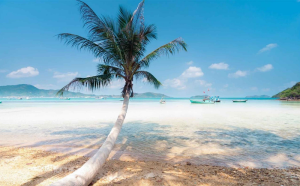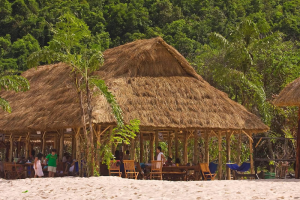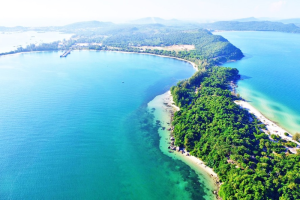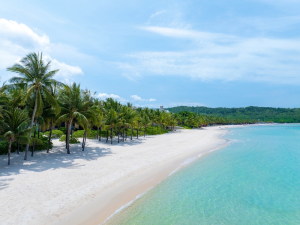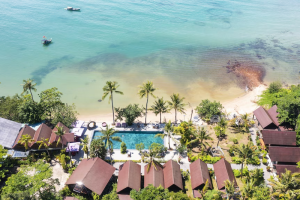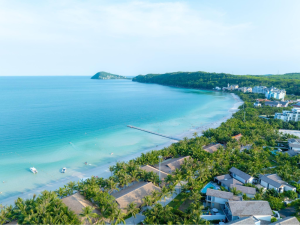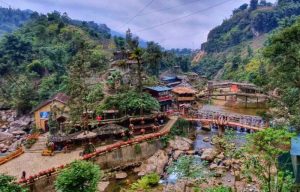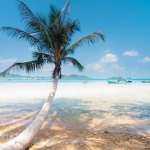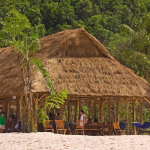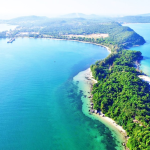Escape the ordinary in Pu Luong Nature Reserve, home to the majestic Pu Luong Mountain and the rewarding trek to Pu Luong Peak! Beyond the challenging trails, discover stunning terraced fields and authentic villages. Understanding the local Pu Luong weather is crucial, as it significantly impacts trail conditions on Pu Luong Mountain and visibility from Pu Luong Peak. Plan your adventure in this tranquil paradise by considering the distinct seasonal Pu Luong weather for the ultimate experience.
Introduction to Pu Luong Peak’s Location in Vietnam
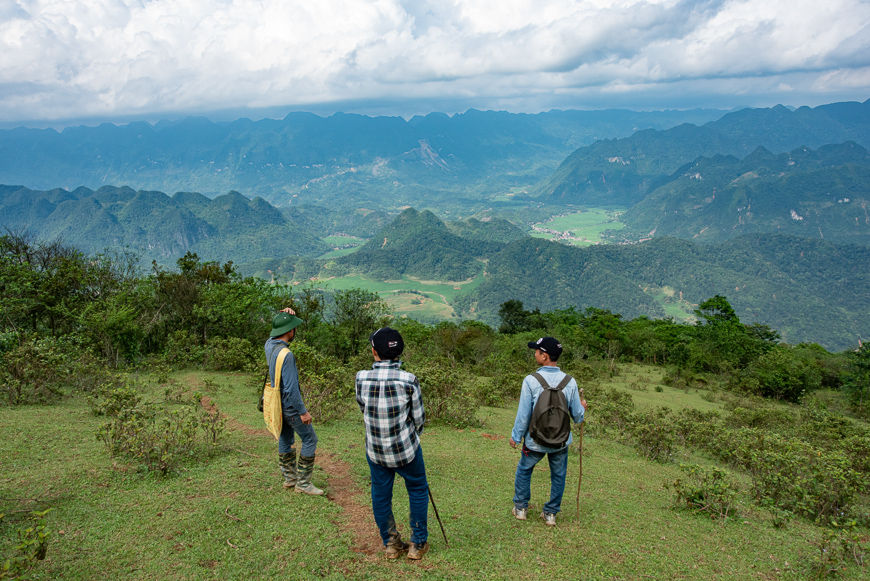
Nestled within the breathtaking landscapes of Northern Vietnam lies Pu Luong Peak, proudly standing as the highest point of the majestic Pu Luong Mountain range. This captivating summit is strategically situated deep inside the Pu Luong Nature Reserve, a significant protected area located across the districts of Ba Thuoc and Quan Hoa within Thanh Hoa Province. Geographically positioned approximately 170 kilometers southwest of Vietnam’s capital, Hanoi, the region encompassing Pu Luong Mountain offers a relatively accessible yet wonderfully serene escape from the urban bustle. A journey here transports visitors to a realm defined by stunning natural beauty, challenging trekking opportunities culminating at Pu Luong Peak, and rich, living ethnic culture.
Best Time to Visit Pu Luong Peak
Embarking on a trek through the stunning, verdant landscapes of Pu Luong Mountain to reach the summit of Pu Luong Peak is a truly rewarding adventure for nature lovers and hiking enthusiasts. This trek offers not only a satisfying physical challenge but also unparalleled panoramic views over the region’s picturesque valleys, intricate terraced rice fields, and traditional Thai ethnic villages. However, to ensure the safest, most enjoyable, and visually spectacular climb, timing your visit correctly is crucial.

The Prime Trekking Window: Dry Season (October – April)
The prime window for trekking up Pu Luong Mountain and aiming for Pu Luong Peak is during the dry season, typically running from October through April.
During these months, including the current time (April 17, 2025), weather conditions are generally optimal. Expect comfortably mild daytime temperatures, cooler evenings, minimal rainfall, and significantly clearer skies.
These clear conditions are crucial as they greatly increase your chances of enjoying the famous, unobstructed 360-degree panoramic views from the summit of Pu Luong Peak, looking out over the Pu Luong Nature Reserve.
Furthermore, trails on Pu Luong Mountain are usually drier, more stable, and less slippery during this period, making the trek safer and more comfortable.
The Golden Spectacle: Harvest Season (September – October)
For travelers, especially photographers, wanting to see the iconic rice terraces at their most beautiful, the harvest season (late September – early October) offers a visually stunning alternative window for visiting Pu Luong Mountain.
During this time, the vast terraced fields covering the valleys and slopes of Pu Luong Mountain turn a mesmerizing sea of vibrant gold as the rice ripens, creating unforgettable vistas as you trek towards Pu Luong Peak.
Weather during this transition period is generally favorable, moving towards the dry season. However, there is a slightly higher chance of occasional rain showers compared to the core dry months (November – March).
Nonetheless, if witnessing these vibrant golden landscapes is your priority, this timing provides exceptional visual rewards for your trek up Pu Luong Mountain.
Trekking Routes to Pu Luong Peak
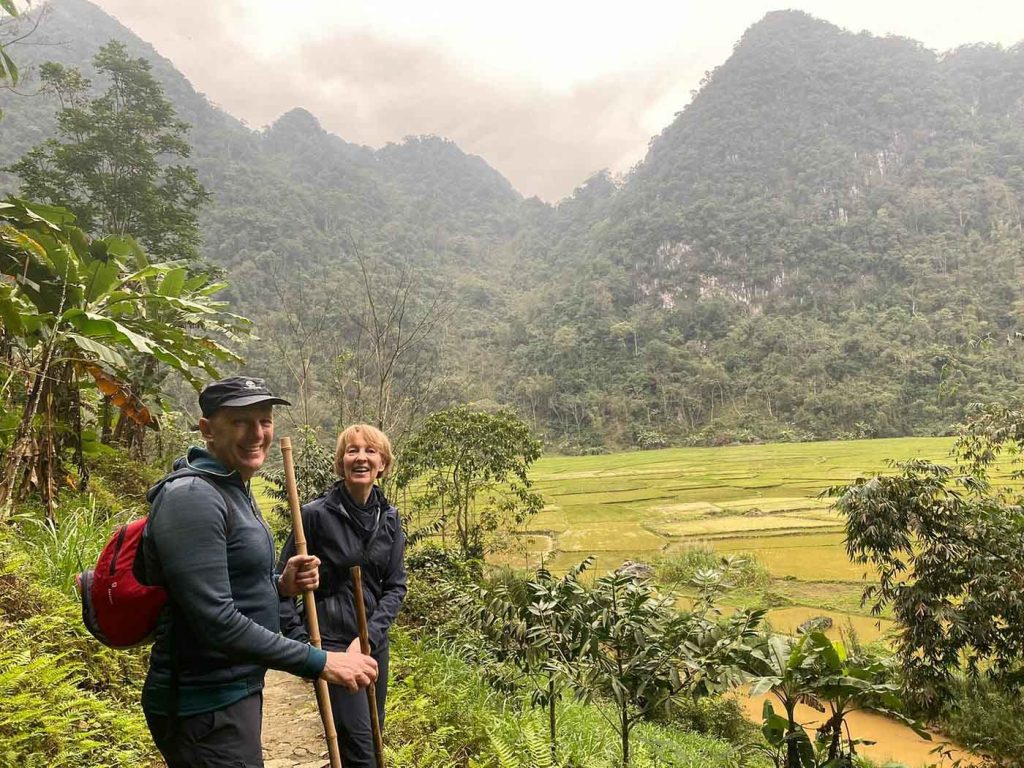
Pu Luong Mountain presents diverse trekking opportunities, from leisurely valley strolls to the demanding multi-day climb to Pu Luong Peak. Choose your adventure based on time, fitness, and whether reaching the summit is your aim. Trails often begin near villages like Don or Kho Muong, gatewaying into the stunning landscapes of the region. Below are some popular route options:
1. Exploring the Foothills: Short Treks (Typically 1-2 Days)
These shorter treks are ideal for visitors with limited time or those preferring a less strenuous introduction. They focus on exploring the beautiful lower slopes, valleys, and villages nestled at the base of Pu Luong Mountain.
These routes generally do not involve summiting Pu Luong Peak itself but offer wonderful cultural immersion and scenic enjoyment. Expect to wander through terraced rice fields, cross bamboo water wheels, visit traditional Thai stilt-house villages, and interact with locals.
Enjoy picturesque views of surrounding hills, often with the imposing silhouette of Pu Luong Mountain in the background. The trails are usually easier, making this a great option for families or casual hikers.
2. The Summit Challenge: Medium Treks (Typically 2-3 Days, Focused on Pu Luong Peak Ascent)
This is the most popular choice for adventurers aiming specifically to stand atop Pu Luong Peak. These treks are significantly more difficult than shorter valley walks.
They involve challenging uphill climbs with steeper inclines and longer hiking days (5-7+ hours) on more rugged terrain on the slopes of Pu Luong Mountain.
The itinerary usually includes at least one overnight stay, often in a village homestay partway up the mountain, allowing for acclimatization before the final push to Pu Luong Peak.
While physically demanding, reaching the summit of Pu Luong Peak offers the reward of breathtaking, 360-degree panoramic views across the vast Pu Luong Nature Reserve – an unforgettable accomplishment.
3. Deep Immersion: Long Treks (Typically 3+ Days)
For dedicated trekkers seeking comprehensive exploration, longer treks offer an in-depth journey into the heart of the Pu Luong Nature Reserve, delving deep into Pu Luong Mountain.
These expeditions often incorporate the challenging ascent of Pu Luong Peak within a broader itinerary. You’ll traverse varied landscapes, visit multiple remote villages, discover hidden gems like waterfalls or caves, and experience deeper cultural immersion.
These adventures demand high physical fitness, stamina, and endurance, often involving multiple nights in different village homestays or even camping in more remote sections of Pu Luong Mountain.
4. Route Customization and the Essential Role of Local Guides
While these categories provide a guide, many trekking routes on Pu Luong Mountain can often be customized by experienced local guides or tour operators to match your specific needs.
Engaging a knowledgeable local guide is highly recommended, especially for attempting to summit Pu Luong Peak or exploring remote parts of Pu Luong Mountain.
Trails can be indistinct, weather can change rapidly, and navigating the terrain safely requires local expertise.
A good guide ensures safety, provides invaluable insights into local culture and ecosystems, handles logistics, supports the local community, and enriches your journey towards conquering Pu Luong Peak.
What to Expect on the Pu Luong Peak Trek?
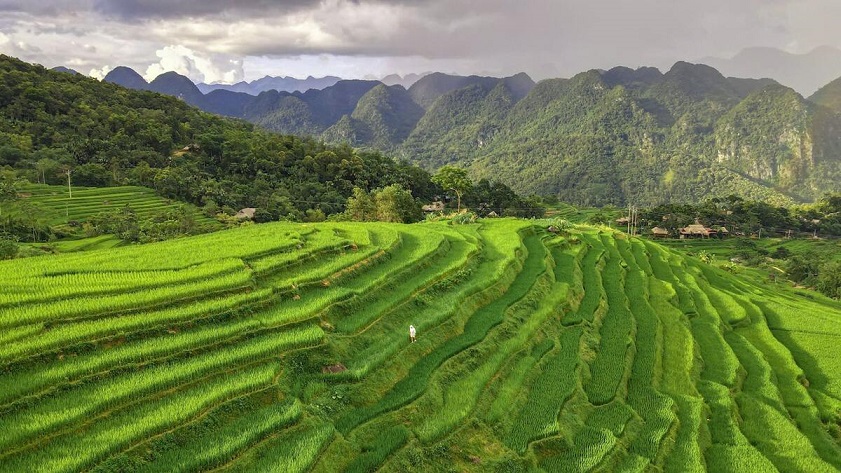
Embarking on a trek to the summit of Pu Luong Peak offers more than just a physical hike; it’s an immersive journey connecting you with nature and local culture on Pu Luong Mountain. Prepare for a richly rewarding adventure. Here’s what you can anticipate:
Constantly Evolving and Breathtaking Scenic Landscapes
Prepare to be captivated by the visual splendor of Pu Luong Mountain. The scenery transforms dramatically as you gain altitude.
Your trek likely starts with intimate views of sculpted terraced rice fields and charming bamboo water wheels in valley streams. You’ll pass through lush, dense forests vibrant with green.
As you climb higher towards Pu Luong Peak, these views open into expansive panoramas across rolling limestone hills and deep, verdant valleys.
The ultimate visual prize, weather permitting, is the stunning 360-degree perspective from the summit of Pu Luong Peak, offering an unforgettable overview of the Pu Luong Nature Reserve – a magnificent reward for your efforts on Pu Luong Mountain.
Physically Challenging Yet Rewarding Trails:
Be aware that the trek to Pu Luong Peak involves significant physical exertion and should not be underestimated.
Trails ascending Pu Luong Mountain often feature steep, sustained uphill sections testing your fitness and strength. Descents can also be demanding over uneven, rocky, or root-filled ground.
Even during the current dry season (April 17, 2025), some shaded sections might remain damp, and loose gravel can pose challenges.
A moderate to good level of fitness and sturdy footwear are essential for safely completing the trek to Pu Luong Peak, as daily hiking can often last 5-7 hours or more.
Authentic and Warm Cultural Encounters:
Your journey across Pu Luong Mountain will likely take you through or near traditional villages, primarily inhabited by welcoming Thai ethnic minority people.
This provides authentic opportunities for respectful cultural interaction, witnessing daily rural life like farming or weaving.
Depending on your itinerary, you might exchange greetings, share tea, or learn about local customs. Multi-day treks often include homestays, offering deeper immersion into the culture and hospitality found on the way towards Pu Luong Peak.
Immersive and Memorable Homestay Experiences:
For multi-day treks aiming for Pu Luong Peak, overnight stays in local homestays within villages on Pu Luong Mountain are common and highly recommended.
Expect simple, clean, authentic accommodation, often involving communal sleeping on mattresses on the floor of a traditional stilt house, with shared basic facilities.
A highlight is sharing delicious, hearty, home-cooked meals featuring local specialties, providing a genuine taste of regional cuisine and a great chance for cultural exchange.
Unpredictable and Rapidly Changing Mountain Weather:
Always be prepared for variable weather on Pu Luong Mountain, which can change quickly due to altitude and topography.
Bright sunshine can yield to thick mist or clouds rapidly, especially nearing Pu Luong Peak, significantly impacting visibility.
Temperatures fluctuate between day and night, and occasional rain showers can occur even in the dry season.
Packing appropriate layers (including warm ones) and reliable waterproof rain gear is essential for comfort and safety on your trek towards Pu Luong Peak.
A Profound Sense of Personal Accomplishment:
Expect to feel immense personal achievement upon successfully reaching the summit marker of Pu Luong Peak. Overcoming the physical demands of climbing Pu Luong Mountain and being rewarded with spectacular, hard-earned views creates a profoundly satisfying experience and a cherished memory.
Local Food and Cuisine in Pu Luong
Savoring the Flavors of Pu Luong Mountain: A Culinary Guide
Beyond the stunning panoramic vistas from Pu Luong Peak and the invigorating challenge of the trails across Pu Luong Mountain, the region invites you on a delightful and authentic culinary journey. This journey is deeply rooted in the traditions and flavors of the Thai ethnic minority people who call this area home. The remarkably pristine natural environment, characterized by fertile valleys, lush forests, and crystal-clear streams cascading down Pu Luong Mountain, yields exceptionally fresh, high-quality ingredients. These ingredients form the foundation of a unique, vibrant, and incredibly flavorful local cuisine. Trying these traditional dishes is an absolutely essential part of experiencing the local culture, and it feels especially rewarding after a day spent exploring the magnificent mountain landscapes or descending from the summit of Pu Luong Peak.
Key Dishes to Discover During Your Visit
Com Lam (Bamboo Rice)
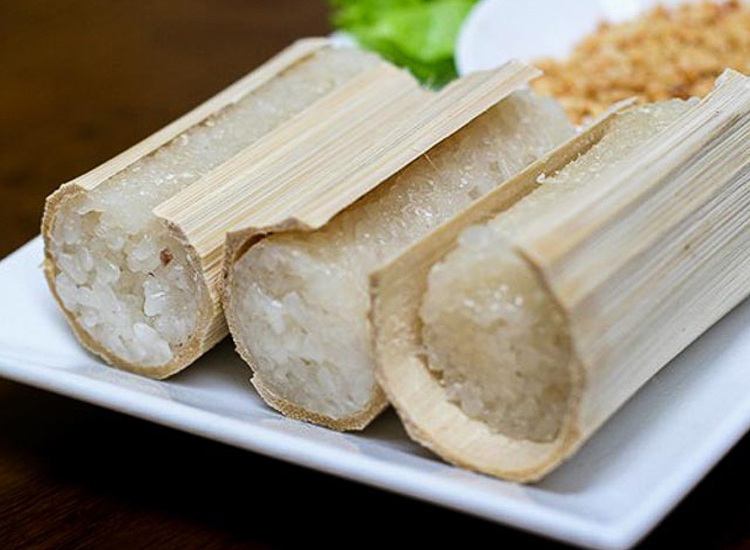
High-quality sticky rice, sometimes harvested from terraced fields on Pu Luong Mountain, is cooked inside young bamboo tubes over embers or fire. This method imparts a subtly sweet flavor and a distinct smoky aroma from the bamboo. It was traditionally a convenient food for journeys through the mountains
Ga Doi Nuong (Grilled Mountain Chicken):

This features free-range chickens that roam the hillsides of Pu Luong Mountain, resulting in firmer, more flavorful meat. Marinated in unique local spices like mắc khén and Doi seeds, it’s grilled over charcoal for crispy skin and tender, smoky meat – a perfect meal after a trek towards Pu Luong Peak
Mang Rung (Wild Bamboo Shoots)

Reflecting the bamboo forests characteristic of the Pu Luong Mountain landscape, fresh wild shoots offer a crisp texture and a fresh, slightly earthy taste. They are prepared in various ways, such as boiled, stir-fried, pickled, or added to soups.
Ca Suoi (Stream Fish)
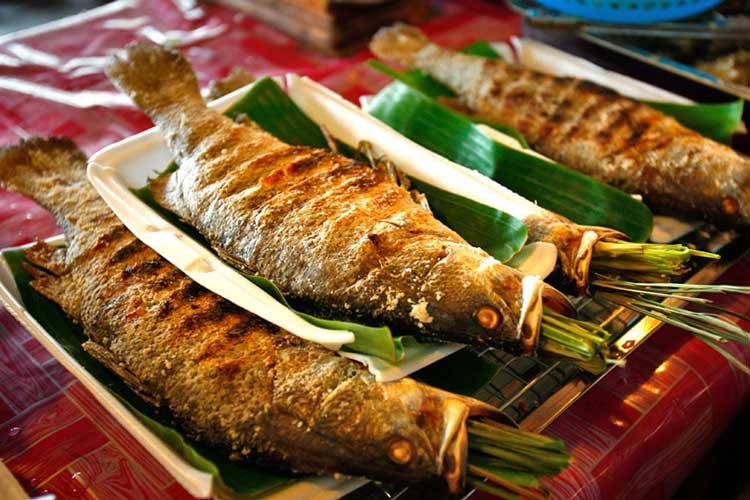
Small fish caught from the clear streams originating high on Pu Luong Mountain. Prepared simply (grilled or lightly fried) to preserve their natural sweetness and clean taste, connecting you to the pristine environment
Local Vegetables and Herbs
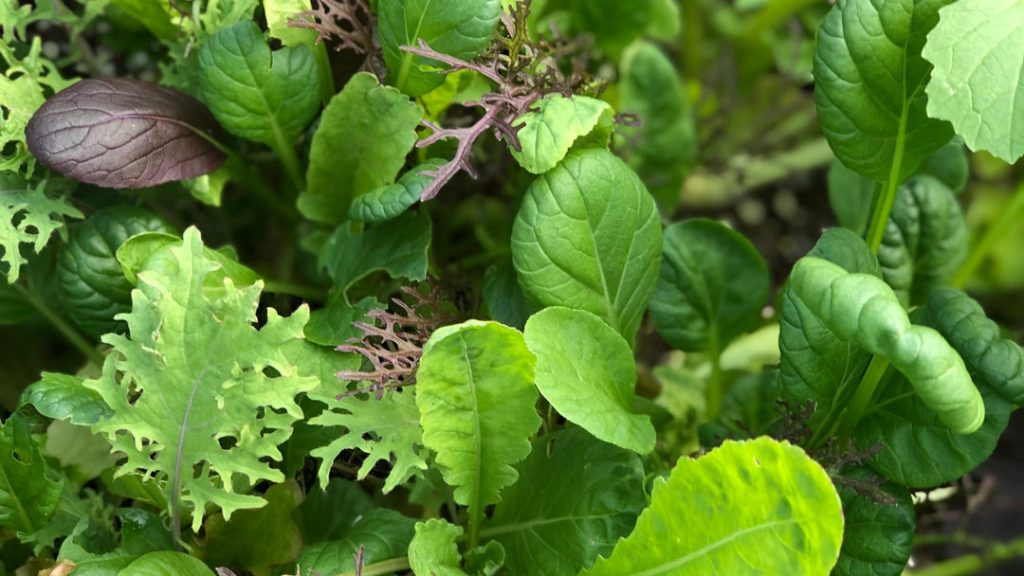
Thanks to fertile soil and the microclimate around Pu Luong Mountain, meals feature abundant fresh, seasonal vegetables and herbs. Simple preparations highlight their natural freshness, key to local Thai ethnic cuisine.
Ruou Can (Communal Rice Wine)
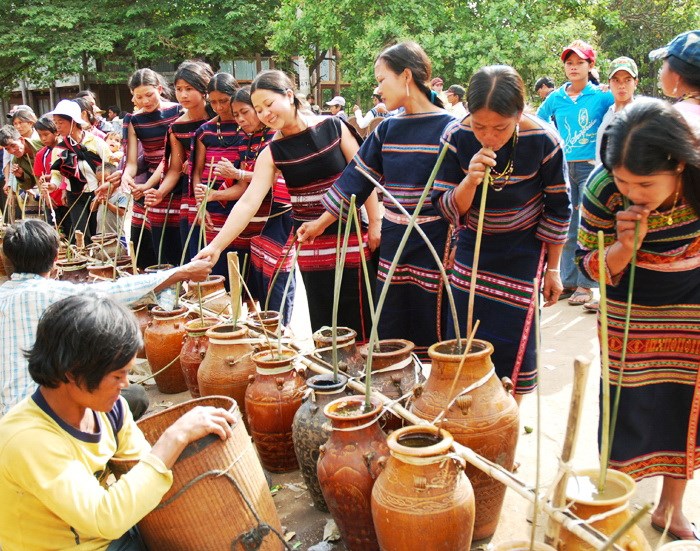
A traditional fermented rice wine, central to the culture in villages nestled around Pu Luong Mountain. With a unique sweet and tangy taste, it’s drunk communally from a jar using straws, symbolizing hospitality and community bonding (perhaps even celebrating a descent from Pu Luong Peak!).
Where to Find These Local Delicacies:
You are most likely to encounter these authentic dishes served in the local homestays where many visitors choose to stay, offering a wonderful home-cooked experience. Additionally, look for small, family-run eateries within the villages scattered across the Pu Luong Mountain region. Don’t hesitate to ask your homestay hosts or local guides for their personal recommendations on where to find the best examples of these delicious local specialties!
Things to Do Around Pu Luong Peak After Trekking

After the exhilarating challenge and physical exertion of your trek up Pu Luong Mountain, take the opportunity to immerse yourself in the wider beauty, culture, and tranquility of this exceptional region at a potentially more relaxed pace. The areas surrounding Pu Luong Mountain offer a wealth of activities that allow you to unwind, learn, and connect more deeply with the unique landscapes and traditions that make this place so special.
Read more: Discover the magic of Hieu Waterfall, Pu Luong: A guide for travelers
Rewarding Activities in the Pu Luong Mountain Region Post-Trek:
1. Visit Traditional Local Villages:
Descend from the heights of Pu Luong Peak and delve into local culture by visiting villages nestled in the valleys and lower slopes of Pu Luong Mountain. Explore places like Ban Don (known for homestays), Ban Hieu (near the waterfall), or the secluded Kho Muong (famous for its cave) to see the daily lives and traditions of the Thai ethnic inhabitants. Take time to wander among unique wooden stilt houses, observe traditional crafts like weaving, interact respectfully, and understand their life intertwined with the Pu Luong Mountain environment.
2. Explore Magnificent Waterfalls:
Soothe tired muscles after the Pu Luong Peak trek by visiting a refreshing waterfall. Hieu Waterfall is a standout feature within the Pu Luong Mountain landscape. It’s known for stunning multi-tiered cascades tumbling down mossy rocks into clear, turquoise pools perfect for a cooling swim and relaxation. While Hieu is most famous, other smaller, secluded waterfalls might be hidden within the folds of Pu Luong Mountain, often found with a local guide’s help.
3. Enjoy a Relaxing Bamboo Rafting Trip:
Swap the vertical challenge of Pu Luong Peak for a serene journey on a bamboo raft, typically on the Cham River in the main valley. Gently float downstream, propelled by a local guide, allowing you to relax and absorb the idyllic scenery: rice paddies, karst formations, riverbank life, and the tranquil Pu Luong Mountain foothills.
4. Explore Vibrant Local Markets:
If your visit coincides with a market day (like the periodic Pho Doan Market), experience this colourful slice of regional life, a hub for communities across the Pu Luong Mountain area. Immerse yourself in the vibrant atmosphere, browse stalls with fresh local produce from Pu Luong Mountain, admire traditional handicrafts like woven textiles, see unique tools, and observe lively interactions. It’s great for authentic souvenirs.
5. Learn About Unique Local Farming Practices:
Appreciate the remarkable agricultural ingenuity seen across the Pu Luong Mountain region, especially after viewing the landscape from Pu Luong Peak. Observe the intricate systems of terraced rice cultivation carving patterns into the mountainsides. Pay attention to the iconic bamboo water wheels, a unique local invention using stream power from Pu Luong Mountain to irrigate paddies above. Observing these sustainable, time-honoured practices offers insight into how locals have adapted to thrive in this mountain environment.
6. Cycle Through Scenic Valleys:
Consider renting a bicycle for a different way to explore after trekking Pu Luong Peak. The relatively flat valley floors offer fantastic leisurely cycling. This allows you to cover more ground, pass through villages easily, enjoy fresh air, and stop freely to admire the stunning agricultural landscapes against the majestic backdrop of Pu Luong Mountain.
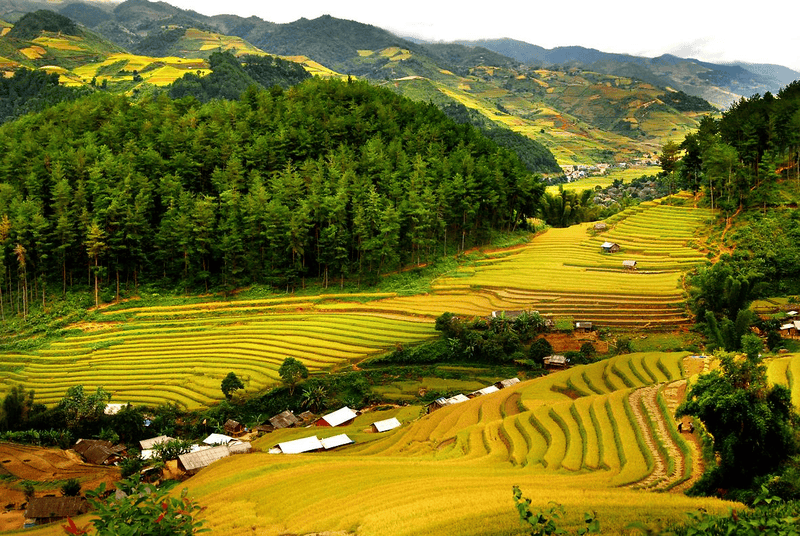
Conquering Pu Luong Peak is more than just a trek; it’s an unforgettable experience offering breathtaking views and cultural insights. Let Lily’s Travel guide your adventure to the summit of Pu Luong Peak and help you explore the surrounding wonders. Create lasting memories on your journey to Pu Luong Peak. Contact us today to start planning your Pu Luong Peak adventure!



